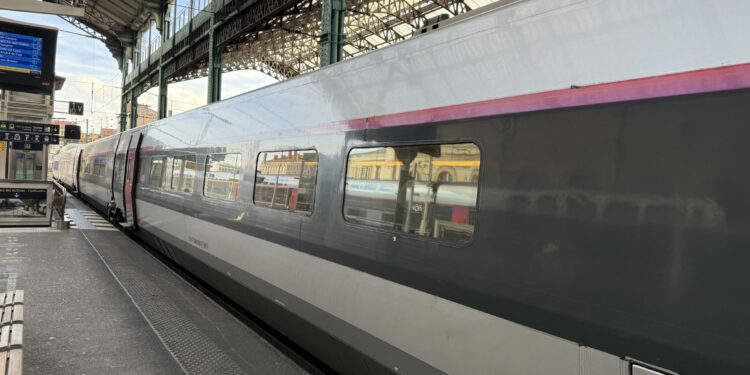Altogether, my eight-and-a-half-hour journey went off without a timetabling hitch. But an issue equally as pressing for the forthcoming transport Commissioner is one of physical accessibility of trains for passengers with luggage, parents with children in prams or strollers, wheelchair users, people with restricted mobility, and others for whom the current railways are inaccessible.
Your author, en route for an eight-week business trip, travelled with a medium-sized suitcase, a rolling carry-on trolley and a small personal item. These were simple enough to roll on and off the first French regional TER train, with a slight but mostly level gap at both my home station and at Lyon Perrache (Lyon’s original and now-secondary station). This level boarding was not, unfortunately, to recur at any point during the journey.
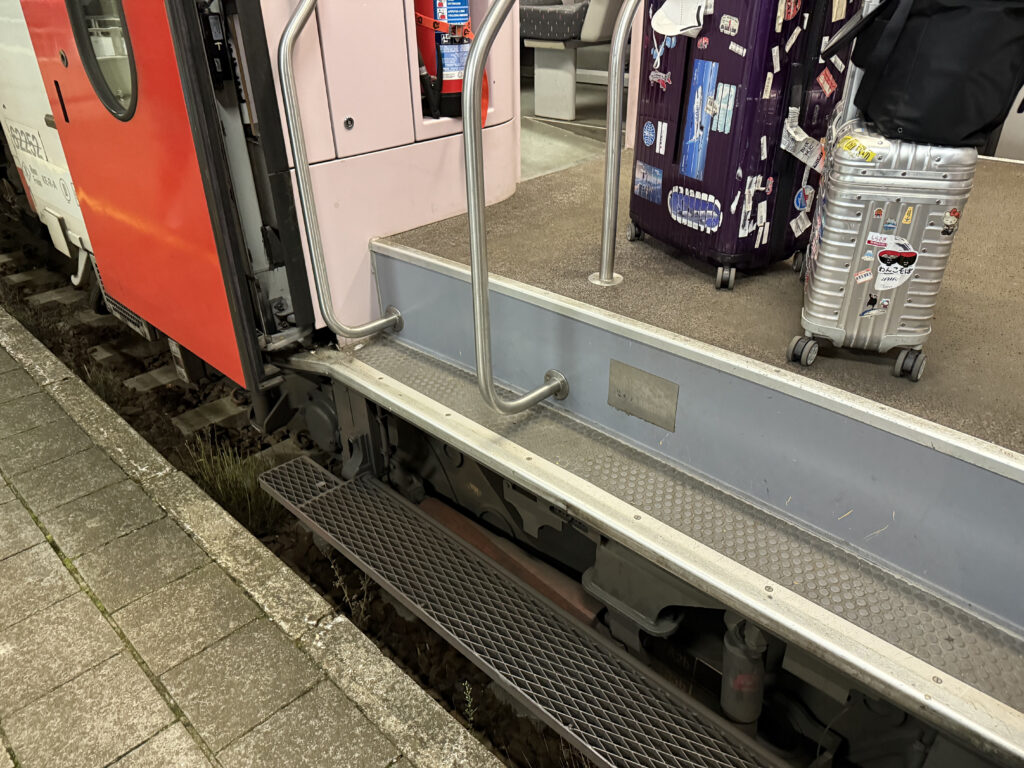
This Belgian Railways InterCity train was a real struggle with luggage as an able-bodied person. Image: John Walton
The TGV — one of the Réseau vintage of 1993-1996 build — was much less accessible, with several steps up from the platform. This was a bit of a struggle with my reasonable amount of luggage, especially with the crowd to get onto the train. Wheelchair users and passengers with mobility restrictions are only served by the SNCF in French — surely something that needs to improve on a Europe-wide basis. The contemporary and subsequent Duplex units are better, but no information about which type of TGV was operating my journey, allowing choice of service by level (or level-ish) boarding, was provided in the booking path.
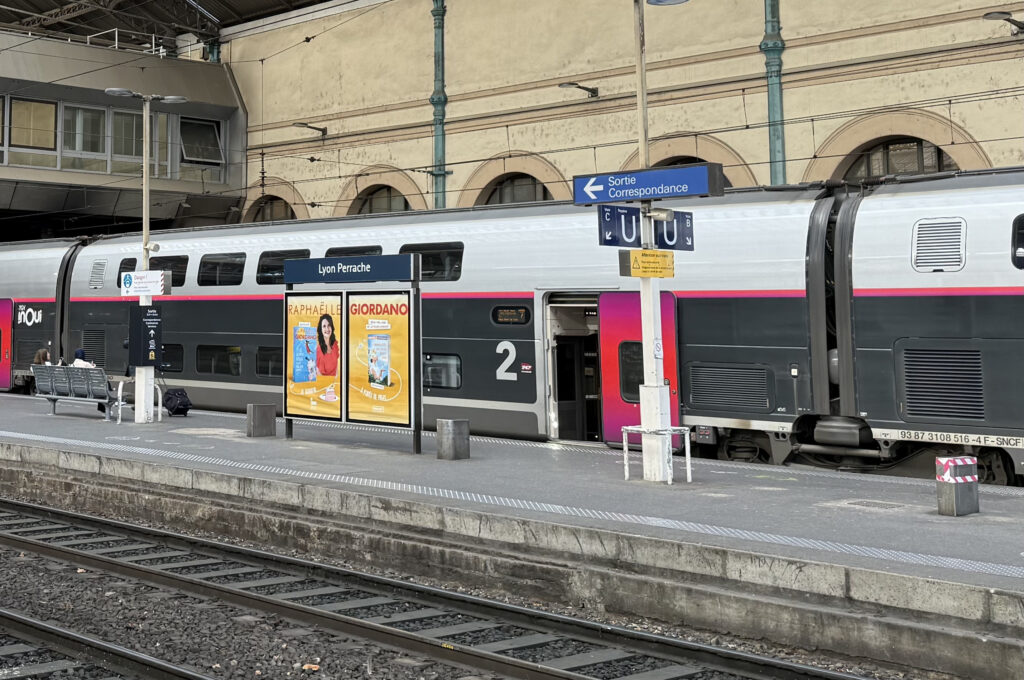
It might sound counterintuitive, but the two-level TGV Duplex trains are actually more accessible from standard French platform height. Image: John Walton
Boarding was even worse in Belgium: both trains I took had three enormous steps up from the platform, and was a real struggle just with my luggage. Wheelchair users or passengers with restricted mobility would likely be unable to use these trains independently. Lower-carbon transportation is crucial to our future, yet rail operators do not seem to be adequately engaging with accessibility.
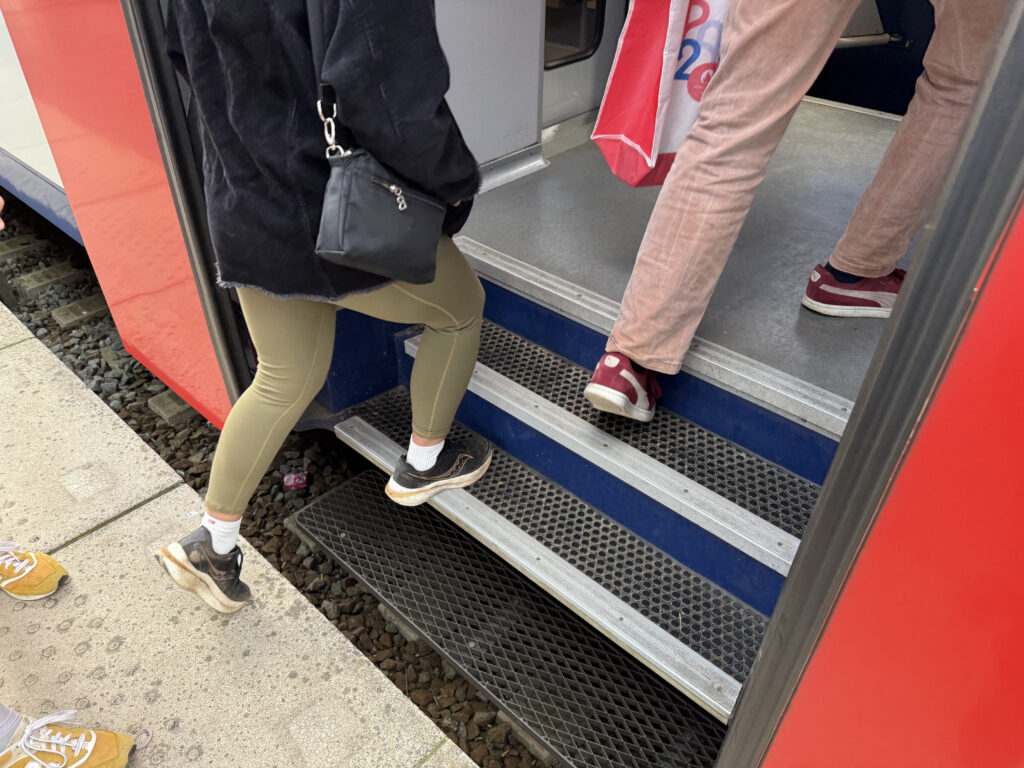
Taking another type of Belgian InterCity train required four steps up from the platform. Image: John Walton
Shocked at the inaccessibility, and increasingly curious, I looked into what assistance is available for disabled passengers. Belgian Railways provides multilingual information, but requires passengers with restricted mobility to book assistance in advance at least 24 hours in advance at most stations (3 hours for 41 major stations if travelling between 0630 and 2100), while some stations do not offer assistance at all. This can be booked via the operator’s website (and a special app), a (Belgian) phone number, or via Facebook/Twitter.
SNCF, the French national operator, provides information and services only in French, and in any case assistance must be requested online or via phone at least 24 hours in advance.
What happens in the event of missed connections, or international journeys across operators, is regrettably opaque.
If international rail travel is to become a part of Europe’s future — and it must — better systems, serving passengers in multiple languages, removing barriers like 24-hour notice of a desire to travel, and level boarding wherever possible to enable independent travel, need to be put in place for accessibility.
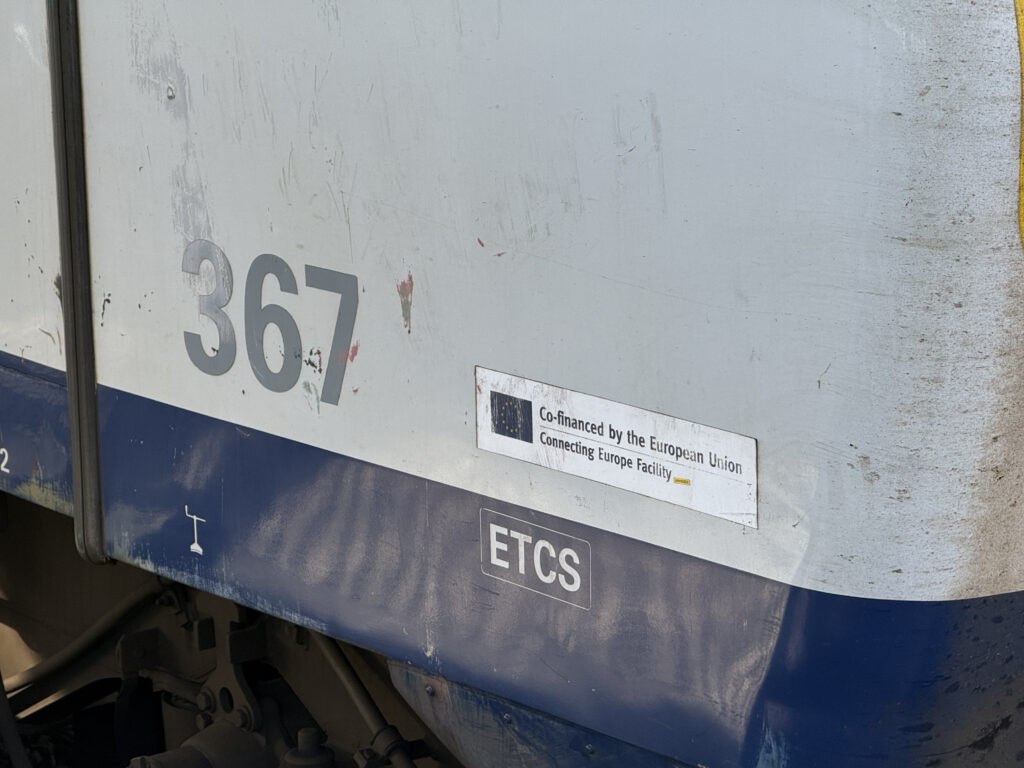
The four-step train was marked as co-financed by the EU — is it time to require accessibility as a condition of financing? Image: John Walton
Related Articles:
Featured image credited to John Walton
Source link : http://www.bing.com/news/apiclick.aspx?ref=FexRss&aid=&tid=6722b4af897245c1845abf1a10198aa7&url=https%3A%2F%2Frunwaygirlnetwork.com%2F2024%2F10%2Fflagging-accessibility-as-eu-eyes-cross-border-rail-through-ticketing%2F&c=17491606742588773862&mkt=de-de
Author :
Publish date : 2024-10-30 15:20:00
Copyright for syndicated content belongs to the linked Source.

